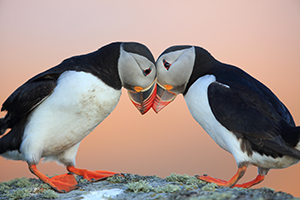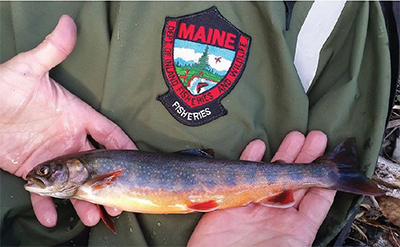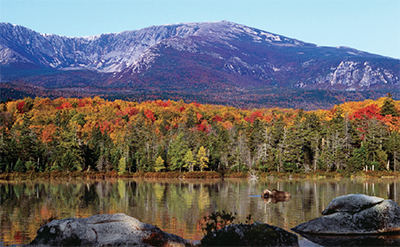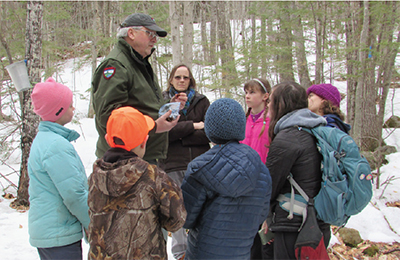Home → Fish & Wildlife → Wildlife → Support Wildlife → Recovering America's Wildlife Act
Recovering America's Wildlife Act

Recovering America’s Wildlife Act is an opportunity to enhance wildlife conservation in the United States. The Act would dedicate up to $1.3 billions of existing annual federal revenues to the implementation of State Wildlife Action Plans (SWAPs).
SWAPs are conservation strategies that identify species of greatest conservation need (SGCN), and provide roadmaps to conserve at risk and common fish and wildlife.
Recovering America’s Wildlife Act was introduced to Congress with broad bipartisan support. Continuing to build support, U.S. Senators Susan Collins and Angus King Sponsored the Act in 2021. Its passage is an important step toward protecting all fish and wildlife resources in the United States for future generations.
Addressing Maine’s Conservation Priorities
Maine would receive roughly $11.4 million per year in funding through Recovering America’s Wildlife Act. The Act also required 25% non-federal matching funds (approximately $3.8 million) bringing the total annual investment in Maine’s fish and wildlife to ~ $15.2 million.
Maine would use those funds for implementation of our State Wildlife Action Plan. This represents an opportunity to protect Maine’s 378 species of greatest conservation need, as well as their habitats, on a level that have never been possible.
The Department envisions three major funding priorities:
Managing Maine’s species of greatest conservation need
Potential annual investment: $6,460,000

Native populations of Arctic Charr (SGCN Priority 1) now reside only
in Maine
waters within the continental U.S. MDIFW fisheries staff have intensively
conserved and managed waters for charr and earned a prestigious national
award for this program.
- Implement conservation actions to sustain and recover species
Sustain species of greatest conservation need by restoring populations, conducting research, and addressing threats. Reduce the need to list species under the Endangered Species Act by closing critical data gaps and improving population management. Accelerate state- and federally-listed fish and wildlife species recovery through collaborative projects. - Expand and create multi-species programs
Extend the reach of Maine’s wildlife conservation work by expanding and creating programs that address common threats and improve management of multiple species. - Enhance disease surveillance and response
Implement disease management, research, and surveillance programs for diseases that may affect Maine’s species of greatest conservation need, such as whitenose syndrome, avian influenza, and Chytrid fungus. - Develop and implement priority species survey research and monitoring
Utilize robust research and monitoring programs to inform species management and planning, provide early warnings of declining populations, and evaluate the effectiveness of conservation programs.
Conserving and enhancing Maine’s priority habitats
Potential annual investment: $6,460,000

High elevation ecosystems such as Katahdin, along with several other peaks,
support Maine’s largest subalpine fir forest, and provide habitat for cooler
climate-dependent species like the endemic Katahdin Arctic Butterfly and
Bicknell’s Thrush whose ranges have shifted due to climate change.
- Develop and enhance landowner assistance programs
Develop programs to incentivize voluntary conservation on private lands. Provide technical assistance to landowners interested in implementing conservation actions to benefit species of greatest conservation need and their habitats. - Expand conservation planning tools and best land management practices
Work with federal, state, and local governments as well as other partners to prioritize habitats with species of greatest conservation need during land management planning. Develop management recommendations that reduce fragmentation, enhance ecosystem functions, and conserve species of greatest conservation need. - Preserve and enhance diverse terrestrial and aquatic habitats
Collaborate with private and non-governmental entities to fund habitat protection and restoration. Pursue partnerships and agreements to conserve riparian areas and protect water quality. - Implement climate resilience and adaptation programs
Evaluate species’ and habitats’ projected climate change exposure, their sensitivity to expected changes, and their capacity to adapt/respond to changes. - Manage and prevent invasive animals and plants
Survey and manage invasive species to prevent and reduce impacts to terrestrial and aquatic habitats. Apply restoration techniques to habitats affected by invasive species.
Expanding conservation education and stewardship
Potential annual investment: $2,280,000

Regional biologist Chuck Hulsey leads an educational program with students
in Western Maine. RAWA funding would provide more opportunities for
collaboration between biologists, educators, and students throughout
the state, and fulfill the MDIFW’s goal of preserving, protecting and
enhancing Maine’s great outdoors for future generations.
- Build an Outdoor Stewardship Ethic
Foster awareness and experiences that build an ethic of stewardship and responsibility in the public to care for natural and cultural resources and outdoor recreation infrastructure. Coordinate with Maine’s outdoor education partners and other stakeholders to advance this effort. - Educate, Inform and Engage Citizens in Support of Conservation
Support of Conservation Expand the availability of training and curriculum tools to educators and conservation partners. Advance public awareness of the significance and benefits of conservation
efforts for species of greatest conservation need and their habitats. - Address the Impacts of Recreation on Wildlife and Habitats Work with land management partners to proactively manage visitors and maintain infrastructure to provide positive outdoor recreation experiences while limiting resource impacts. Utilize best practices when developing new trails or other outdoor infrastructure.
- Enhance Volunteer and Community Science Capacity
Increase capacity of outdoor recreation providers and stewardship organizations to engage volunteers, including youth and young adults, and enhance other types of support for stewardship and community science activities.